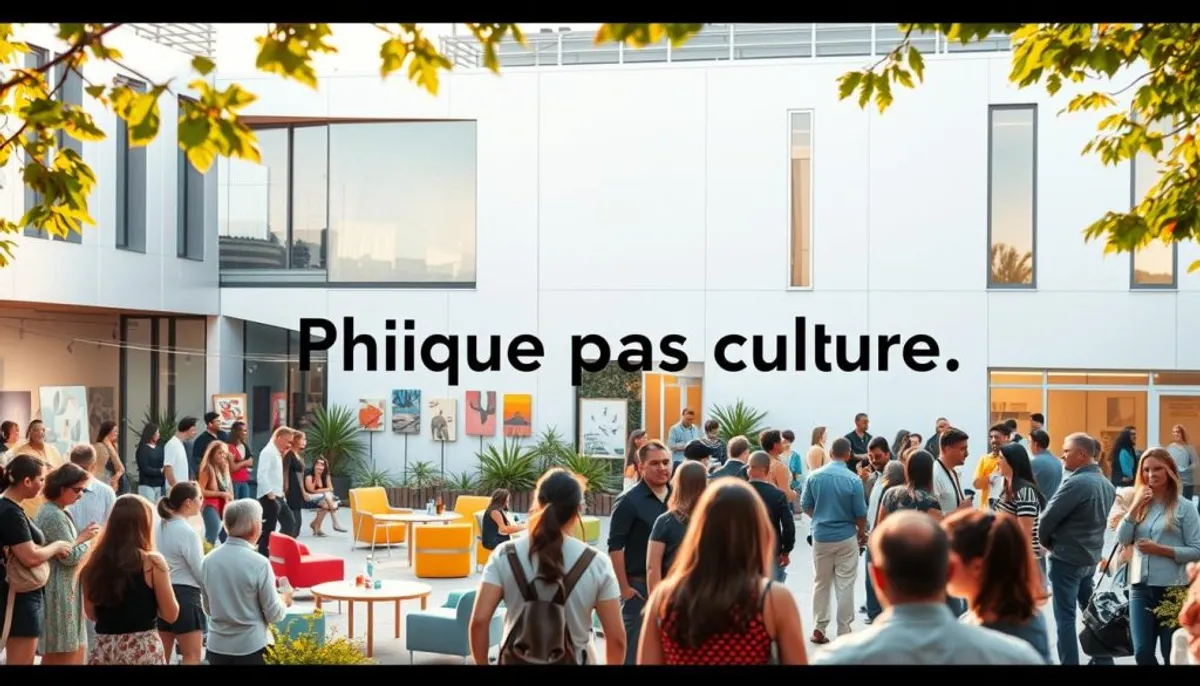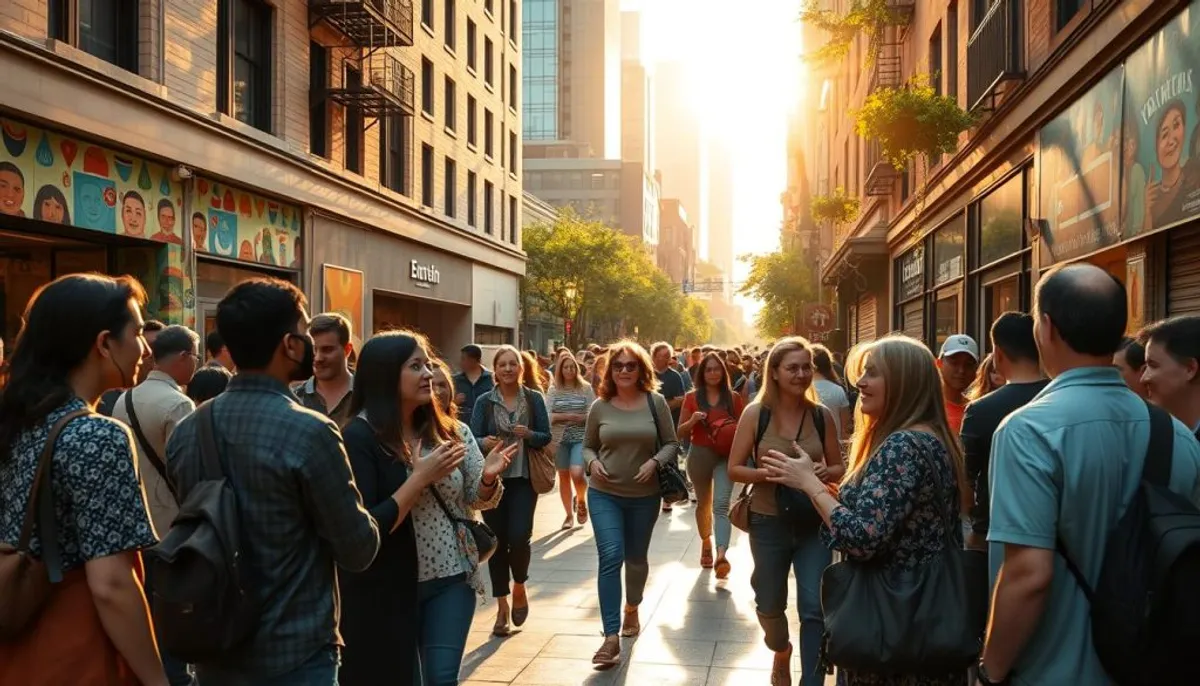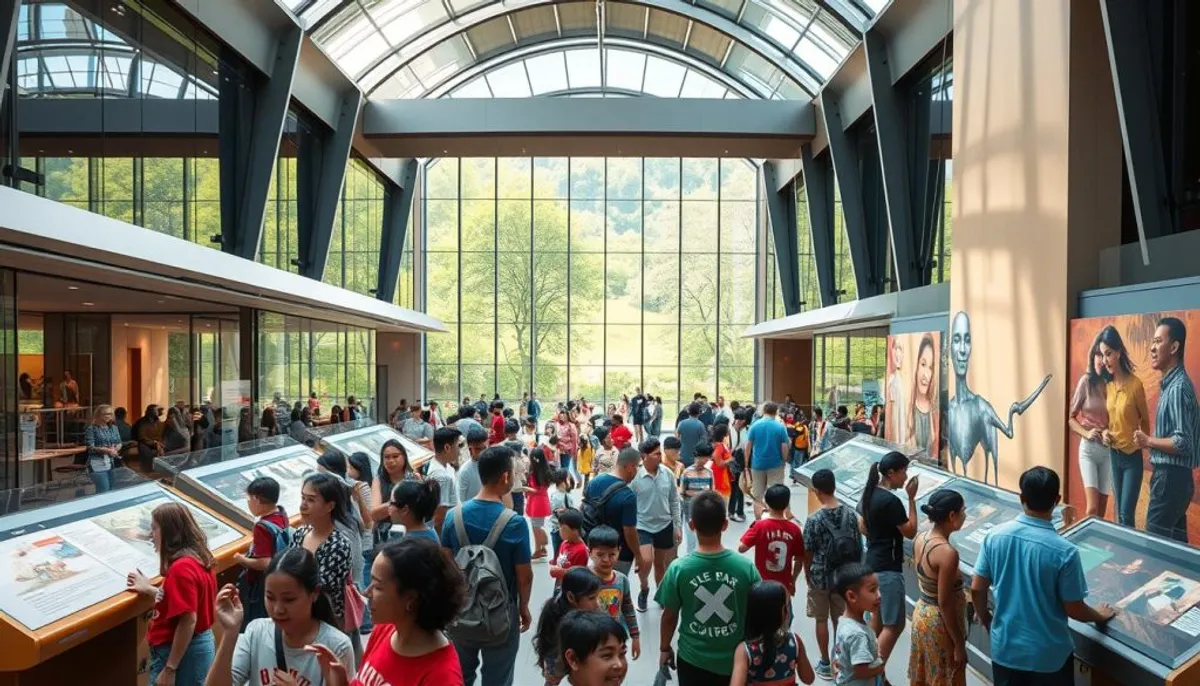Welcome to the fascinating universe of “Why not culture,” your guide to exploring culture without limits. This unique guide opens the doors to an exceptional cultural diversity, accessible to all.
Imagine a world where every citizen can thrive thanks to the artistic richness that surrounds them. This is precisely what “Why not culture” offers. Our mission is to encourage you to dive into an ocean of varied cultural expressions.

The Culture Pass, born from a reflection on the practices of younger generations, perfectly illustrates this desire for openness. With 85% of young people benefiting from it, it proves that the appetite for culture is very real. Nearly 400,000 different titles have already been purchased thanks to this initiative!
Whether you are a fan of contemporary art, passionate about history, or curious about the digital world, “Why not culture” will guide you towards enriching experiences. Together, let’s explore the beauty of our heritage and the creativity of our artists.
The importance of cultural accessibility in our society
Access to culture is essential in our society. In France, the law of February 11, 2005 ensures that everyone, including those with disabilities, can visit museums. This measure demonstrates our commitment to cultural democratization.
The fundamental role of culture in personal development
Arts and artistic expressions broaden our worldview. Artistic and cultural education (EAC) programs target children aged 5 to 12. They develop creativity and critical thinking, which are essential for growth.
Heritage and traditions are at the heart of this learning. They are foundations for understanding our history and culture.
The challenges of cultural democratization
Inequalities persist despite efforts. Insee reveals that only 11% of the poorest 20% visit a cultural site more than 3 times a year. Illiteracy affects 9% of the French population, posing a significant challenge.
Initiatives like street libraries aim to bridge the gap between reading and children in disadvantaged areas.
The social impact of access to culture
Access to culture strengthens social cohesion and stimulates collective creativity. Projects like “Art in immersion” offer immersive experiences to young people. They make art accessible to a new generation.
Artistic practice also helps hospitalized children. It supports them therapeutically, reducing their feeling of isolation.
| Indicator | Percentage |
|---|---|
| Population affected by illiteracy | 9% |
| 20% of the poorest visiting a cultural site +3 times/year | 11% |
| 20% of the poorest going to the cinema +3 times/year | 0% |
Why not culture: towards a new inclusive approach
“Why not culture” represents an innovative vision of cultural accessibility in France. This initiative aligns with existing cultural policies while bringing an original perspective. It aims to encourage open-mindedness and intercultural exchanges, crucial in our multicultural society.
The approach of “Why not culture” makes access to various artistic experiences more attainable. It allows for a better understanding of our diverse cultural heritage. This approach corresponds to current trends in the professional world.

Companies valuing diversity and inclusion experience remarkable success. A study by McKinsey shows that diverse teams have a 12% higher chance of financial success. Moreover, ethnic diversity is linked to better economic performance than gender diversity alone.
Open-mindedness in the professional environment brings tangible benefits. Employees in an inclusive environment are 1.5 times more likely to be happy at work. This satisfaction manifests as increased productivity and reduced staff turnover.
| Aspect | Impact |
|---|---|
| Diversity of teams | +12% chance of financial success |
| Inclusive environment | 1.5 times more chance of happiness at work |
| Transparency of information | 44% of employees find it beneficial for performance |
“Why not culture” draws inspiration from these principles to create an inclusive cultural space. By promoting intercultural exchanges, this initiative contributes to building a more inclusive and dynamic society.
The different forms of cultural expression accessible to all
Access to culture is expanding, offering multiple ways to discover the arts and heritage. This cultural democratization touches various fields, allowing everyone to find an artistic expression that resonates with them. Thus, culture becomes more accessible and inclusive.
Visual and performing arts
Visual and performing arts play a central role in our cultural heritage. Museums, galleries, and theaters open up to all audiences. Initiatives like the free admission to certain events aim to broaden access. However, 47% of people in precarious situations are interested in shows, but only 20% actually attend.
Historical and architectural heritage
Historical and architectural heritage constitutes an important part of our cultural legacy. UNESCO supports a network of 180 creative cities in 72 countries, valuing cultural diversity. This rich heritage is recognized as a driver of peace and prosperity, fostering cognitive openness and social development.
Digital cultural practices
The technological revolution has facilitated access to many forms of artistic expressions. The use of smartphones, a daily tool for young people, creates a direct link between cultural actors and this audience. This digital approach offers new perspectives for discovering and appreciating the arts.
| Type of cultural expression | Accessibility percentage | Social impact |
|---|---|---|
| Visual and performing arts | 20% for precarious individuals | 60% of employees enriched by cultural activities |
| Historical heritage | 180 UNESCO creative cities | Driver of peace and prosperity |
| Digital practices | Increased accessibility via smartphones | Direct link with younger generations |
Initiatives promoting access to culture
Access to culture for all is a major issue in our society. Numerous initiatives have been implemented to encourage cultural exploration and personal enrichment. Among these initiatives, the Culture Pass, local actions, and educational programs play a crucial role.
The Culture Pass and its advantages
The Culture Pass is a flagship initiative aimed at democratizing access to culture for young people. Available to all 15-18 year-olds and students from sixth grade to high school, this initiative benefits from an annual budget of 267 million euros. It encourages cultural exploration by offering a credit to spend on various artistic activities.

The activation rate of the pass among young people from working-class or employed families reaches 68%, demonstrating its success among targeted audiences. Additionally, 30% of cultural offers are accessible in rural areas, thus promoting personal enrichment in less urbanized territories.
Local and territorial initiatives
In addition to the Culture Pass, many local initiatives contribute to the cultural enrichment of communities. The territorial innovation fund, launched in 2022, supports projects involving the participation of residents and local authorities. The Micro-Folies program deploys digital museums across the territory, making art accessible to all.
Artistic and cultural education programs
Artistic education plays a fundamental role in raising awareness of culture from a young age. 157 territories have been labeled “100% Artistic and Cultural Education” since 2022, aiming for quality education for all young people. The national cultural summer has seen the implementation of over 2,700 projects, mobilizing 33,000 professionals and reaching 1.5 million people.
These initiatives, in synergy with the “why not culture” approach, create a favorable ecosystem for exploration and personal cultural enrichment. They open new horizons for everyone.
Overcoming barriers to cultural access
Access to culture is a major issue for social inclusion. Despite efforts, some groups remain excluded from cultural activities. Economically disadvantaged individuals, refugees, immigrants, and people with disabilities are particularly affected.
Lack of awareness of cultural services is a significant barrier. Entry and transportation costs limit participation for low-income individuals. Rural areas suffer from a lack of cultural offerings. Physical accessibility remains a challenge for people with disabilities.
Cultural diversity is essential to overcoming these barriers. Minority communities struggle to find services tailored to their culture of origin. The lack of support for subcultures reinforces exclusion. An inclusive approach fosters open-mindedness and enriches the cultural offering.
| Obstacle | Solution |
|---|---|
| Entry cost | Reduced rates, free admission |
| Transportation | Free shuttles |
| Physical accessibility | Adapted facilities |
| Language barrier | Translation, cultural mediation |
Innovative initiatives are emerging to promote inclusion. Drama workshops, digital media training, and rap music centers create jobs in the creative industries. These projects enhance participants' self-confidence, especially among disadvantaged youth.
Conclusion
The “Why not culture” approach serves as an essential guide for personal enrichment. It encourages openness to intercultural exchanges, sources of growth and creativity. Cultural accessibility for all is a major issue, fostering individual and collective development.
Initiatives such as the Culture Pass, local initiatives, and educational programs offer numerous opportunities. They help overcome barriers and democratize access to various forms of artistic expression. From heritage to digital practices, these tools are essential.
By adopting the philosophy of “Why not culture,” we contribute to building a more open and harmonious society. Every participation in cultural life enriches our understanding of the world. It strengthens social bonds. Let us dare to explore, share, and create to make culture a vehicle for accessible growth for all.
RelatedRelated articles


